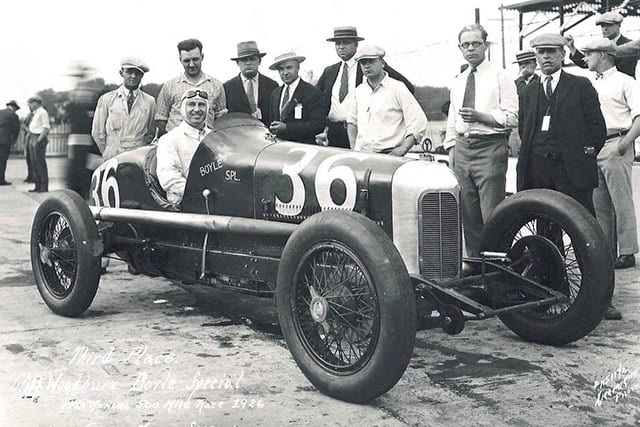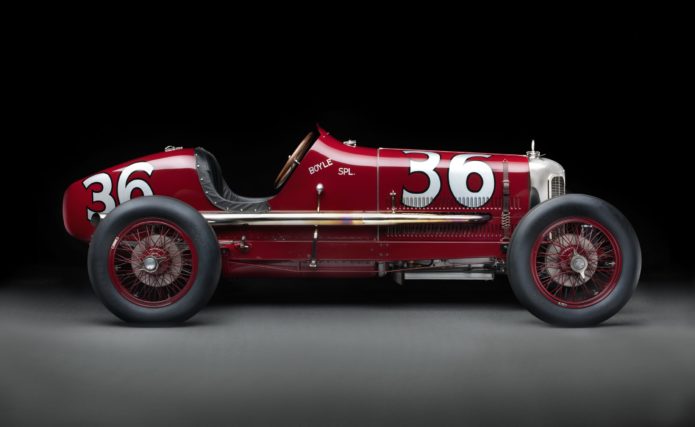Tech Specs
Eight-cylinder in-line engine, double overhead camshafts, supercharged, 90.2 cubic inches, 1478 cc, 200 hp at 5000 rpm.
Before/After
1924 Miller


About the 1924 Miller 122/91 Racing Car
In the history of motor sport, Harry Armenius Miller was a genius and a visionary. He was also an abysmal businessman, a factor that caused him significant angst but did not mitigate the breadth of his achievement. Quite simply, the engines and cars that Miller built dominated American racing for almost a half century.
This remarkable history began in 1915 when “Wild Bob” Burman stopped by Miller’s carburetor factory in Los Angeles with the shattered remains of his Grand Prix Peugeot’s engine. The war in Europe precluded Burman’s securing replacement parts from France, and he hoped Miller could build him a duplicate. Miller did. After the Armistice Miller studied the Duesenberg and the French Ballot designed by Ernest Henry, the man responsible for the Grand Prix Peugeot, and created his own masterpiece, the 183, which Jimmy Murphy drove to victory in the 1922 Indianapolis 500.
Scaling down his engine for the new formula in 1923, Miller provided the new 122 with a singleseater body that was lithe, slim and, like virtually all Millers, gorgeous. Drivers had to be slim too; cockpit width was a mere 18 inches. Approximately fifteen cars were built, “certainly enough,” as automotive historian Griff Borgeson observed, “for the series to become highly perfected.” The proof was in the racing. In 1922 Murphy’s winner had been the only Miller in the top ten at Indy, against Duesenberg’s seven. In 1923 the winning Miller was one of six to finish in the money. Then, in 1924, while Duesenberg won, eight Millers were in the top ten.
Miller’s response to Duesenberg’s centrifugal supercharger in 1924 was a bolt-on supercharger kit for $1,200.00 (gear driven by the aft ends of the two camshafts). Supercharging sent bhp over 200 which made the cars much faster. So fast, the race organizers put their heads together and declared a new international formula of 1500cc or 91.5 cubic inches. Miller incorporated a supercharger from the outset on his new “91”. Records fell like rain, all marks from one to one hundred miles on dirt tracks, 164 mph at Muroc. Leon Duray’s 124.018 lap at Indy in 1928 was not bettered until 1937, the longest any record has ever stood at the Speedway. Few cars wear the sobriquet “immortal” better than the Miller.
Photos – Peter Harholdt













